Green Reads
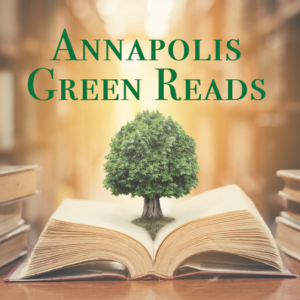
A Book Club About The Environment
Join Annapolis Green for our environmental book club, Annapolis Green Reads, to grow your appreciation for the environment while benefiting from the collective wisdom of many authors who write about our natural world and to connect with others! All you need is an interest in reading books (or listening to the audio version) about our environment and place in it. No expertise on these issues is necessary, although we welcome those who have come to participate and contribute.
Book club meetings will be held either in person or on Zoom. Questions, comments, or a desire to join can be emailed to bay@annapolisgreen.com. Our volunteer Green Reads leader will send out reminders and more detailed information via email, such as the Zoom link, before each meeting.
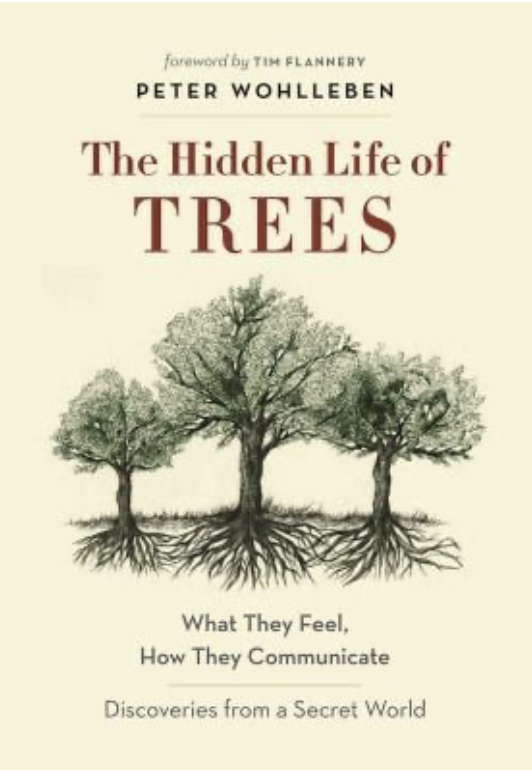
Next Date: Monday, September 9 at 7 pm
Our next Green Reads meeting will be held virtually over Zoom. For this meeting, we have selected:
The Hidden Life of Trees – What they Feel, How they Communicate – Discoveries from a Secret World by Peter Wohllern. From Good Reads: In The Hidden Life of Trees, Peter Wohlleben shares his deep love of woods and forests and explains the amazing processes of life, death, and regeneration he has observed in the woodland and the amazing scientific processes behind the wonders of which we are blissfully unaware. Much like human families, tree parents live together with their children, communicate with them, and support them as they grow, sharing nutrients with those who are sick or struggling and creating an ecosystem that mitigates the impact of extremes of heat and cold for the whole group. As a result of such interactions, trees in a family or community are protected and can live to be very old. In contrast, solitary trees, like street kids, have a tough time of it and in most cases die much earlier than those in a group.
Drawing on groundbreaking new discoveries, Wohlleben presents the science behind the secret and previously unknown life of trees and their communication abilities; he describes how these discoveries have informed his own practices in the forest around him. As he says, a happy forest is a healthy forest, and he believes that eco-friendly practices not only are economically sustainable but also benefit the health of our planet and the mental and physical health of all who live on Earth.
~~~~~~~~
Possible Selections for Future Months
- Remarkably Bright Creatures by Shelby Van Pelt
- Naming Nature: The Clash Between Instinct and Science by Carol Kaesuk Yoon
- We Are the Weather: Saving the Planet Begins at Breakfast by Jonathan Safran Foer
- Gun Island by Amitav Ghosh
- A poetry collection by Mary Oliver
- Hope in the Dark by Rebecca Solnit
- Emergent Strategy: Shaping Change, Changing Worlds by Adrienne Maree Brown
- The Power of the Sea: Tsunamis, Storm Surges, Rogue Waves, and our Quest to Predict Disasters by Bruce Parker
- Apocalypse Never: Why Environmental Alarmism Hurts Us All by Michael Shellenberger
- Every Woman’s Guide to Saving the Planet by Natalie Isaacs
- Parable of the Sower by Octavia E. Butler
- Finding the Mother Tree by Suzanne Simard
- The Humane Gardener by Nancy Lawson
- The Displacements: A Novel by Bruce Holsinger
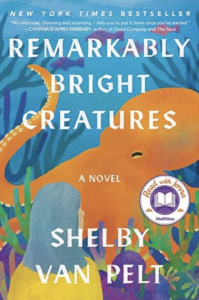 |
 |
||
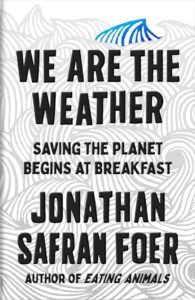 |
 |
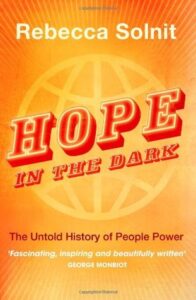 |
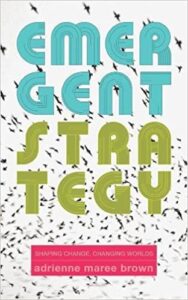 |
 |
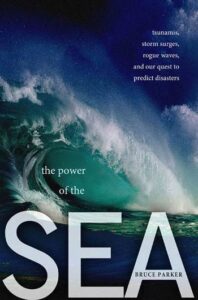 |
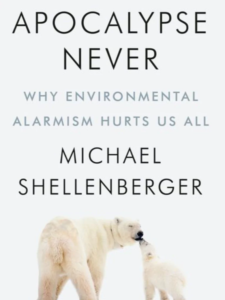 |
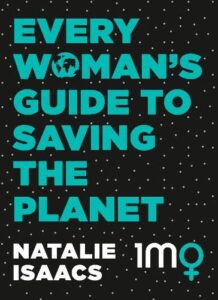 |
 |
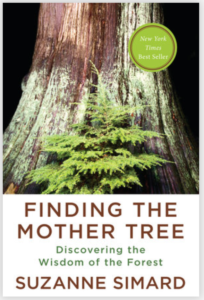 |
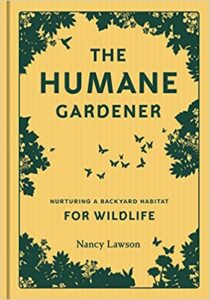 |
 |
Past Green Reads
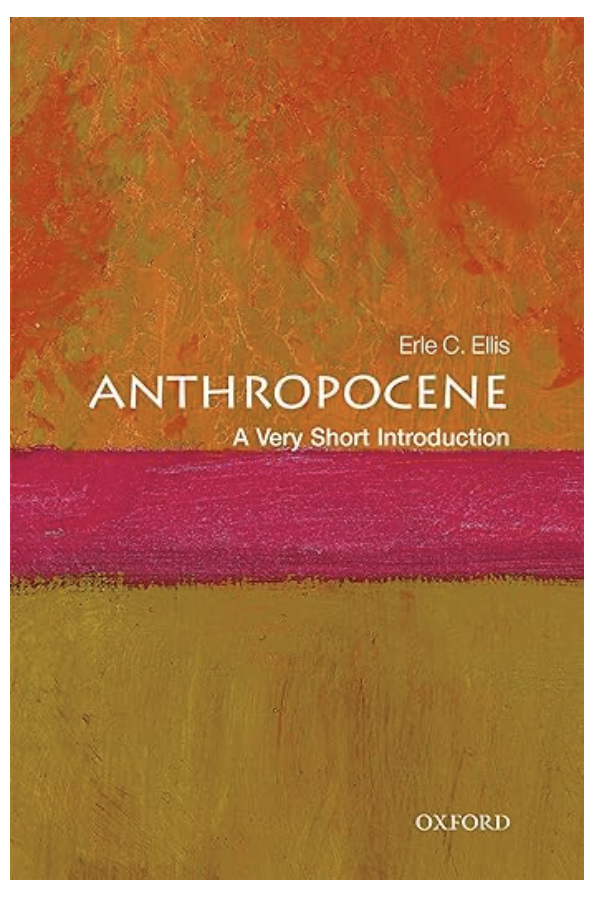
Monday, June 24, at The Vineyards at Dodon to discuss Anthropocene—A Very Short Introduction by Erle Ellis. A shorter read (208 pages) in a fantastic location!
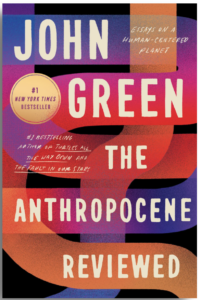
Monday, April 29, A collection of essays!
The Anthropocene Reviewed by John Green.
February 26, 2024: Deluge by Stephen Markley “In the first decades of the 21st century, the world is convulsing, its governments mired in gridlock while a patient but unrelenting ecological crisis looms. America is in upheaval, battered by violent weather and extreme politics. In California in 2013, Tony Pietrus, a scientist studying deposits of undersea methane, receiv

es a death threat. His fate will become bound to a stunning cast of characters—a broken drug addict, a star advertising strategist, a neurodivergent mathematician, a cunning eco-terrorist, an actor turned religious zealot, and a brazen young activist named Kate Morris, who, in the mountains of Wyoming, begins a project that will alter the cour
se of the decades to come… The book makes a persuasive, forward-looking case for a circular economic model, a ‘closed-loop’ system that wastes no natural resources. Entrepreneur, CEO and sustainability expert Ron Gonen argues that circularity is not only crucial for the planet but holds immense business opportunity.” — Penguin Random House. More about the book.

December 2023: The Waste-Free World by Ron Gonen. “The book makes a persuasive, forward-looking case for a circular economic model, a ‘closed-loop’ system that wastes no natural resources. Entrepreneur, CEO and sustainability expert Ron Gonen argues that circularity is not only crucial for the planet but holds immense business opportunity.” — Penguin Random House. More about the book.

October 2023: Fuzz: When Nature Breaks the Law by Mary Roach. She has been described as America’s funniest science writer. “What’s to be done about a jaywalking moose? A bear caught breaking and entering? A murderous tree? Three hundred years ago, animals that broke the law would be assigned legal representation and put on trial. These days, as New York Times best-selling author Mary Roach discovers, the answers are best found not in jurisprudence but in science: the curious science of human-wildlife conflict, a discipline at the crossroads of human behavior and wildlife biology.”
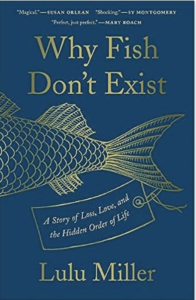
August 2023: Why Fish Don’t Exist: A Story of Loss, Love, and the Hidden Order of Life by Lulu Miller. Described as part biography, part memoir, and part scientific adventure, a it is afable about how to persevere in a world where chaos will always prevail and how your heroes aren’t always who you think they are.
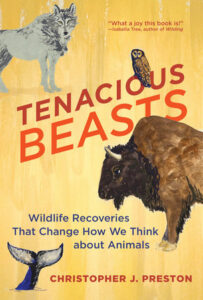 June 2023: From Penguin Random House:”An inspiring look at wildlife species that are defying the odds and teaching important lessons about how to share a planet … Tenacious Beasts is quintessential nature writing for the Anthropocene, touching on different facets of ecological restoration from Indigenous knowledge to rewilding practices. More important, perhaps, the book offers a road map—and a measure of hope—for a future in which humans and animals can once again coexist.” More about the book.
June 2023: From Penguin Random House:”An inspiring look at wildlife species that are defying the odds and teaching important lessons about how to share a planet … Tenacious Beasts is quintessential nature writing for the Anthropocene, touching on different facets of ecological restoration from Indigenous knowledge to rewilding practices. More important, perhaps, the book offers a road map—and a measure of hope—for a future in which humans and animals can once again coexist.” More about the book.

April 2023: Our Changing Menu: Climate Change and the Foods We Love and Need by Michael P. Hoffman, Carrie Koplinka-Loehr, and Danielle L. Eiseman unpacks the increasingly complex relationships between food and climate change. Whether you’re a chef, baker, distiller, restaurateur, or someone who simply enjoys a good pizza or drink, it’s time to come to terms with how climate change is affecting our diverse and interwoven food system. The book is a celebration of food and a call to action—encouraging readers to join with others from the common ground of food to help tackle the greatest challenge of our time. More about the book.
March 2023: A Discussion About Environmental Legislation
We had the pleasure of a presentation by Martha Ainsworth, Chair, Maryland Sierra Club Zero Waste Team and Member, National Sierra Club Zero Waste Team . She spoke about a handful of bills that are being considered in the General Assembly this session. It was interesting to hear about what other states and municipalities have successfully enacted and what some of the possibilities are for us as relates to trash management.
December 2022: We had an informal potluck and discussed what books to put on our list for 2023 and decided that we may switch from a monthly to an every-other month schedule.

October 2022: The Star Builders: Nuclear Fusion and the Race to Power the Planet by Arthur Turrell
From Simon & Schuster: “Not only would controlled nuclear fusion help solve the climate crisis, it could also make other highly desired technological ambitions possible—like journeying to the stars. Given the rising alarm over deterioration of the environment, and the strides being made in laser and magnetic field technology, powerful momentum is gathering behind fusion and the possibilities it offers.” More about the book.
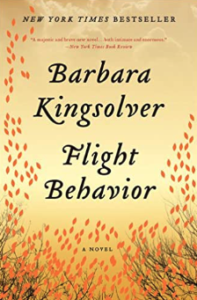 September 2022: Flight Behavior by Barbara Kingsolver
September 2022: Flight Behavior by Barbara Kingsolver
From an NPR review:
Kingsolver integrates “important issues with engaging narrative that feels organic: A colony of butterflies and a young woman have both deviated from their optimal flight paths, a story Kingsolver uses to take on global warming and the high costs to society of grossly inadequate public school education, especially in the sciences … Kingsolver is no mere propagandist. She is a storyteller first and foremost, as sensitive to human interactions and family dynamics as she is to ecological ones.” More about the book.
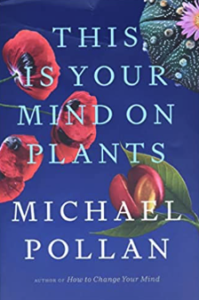 August 2022: This is Your Mind on Plants by Michael Pollan
August 2022: This is Your Mind on Plants by Michael Pollan
This book is a radical challenge to how we think about drugs, and an exploration into the powerful human attraction to psychoactive plants—and the equally powerful taboos. Of all the things humans rely on plants for—sustenance, beauty, medicine, fragrance, flavor, fiber—surely the most curious is our use of them to change consciousness: to stimulate or calm, fiddle with or completely alter, the qualities of our mental experience. More about the book.
 July 2022: Lab Girl by Hope Jahren
July 2022: Lab Girl by Hope Jahren
Geobiologist Hope Jahren has spent her life studying trees, flowers, seeds, and soil. Lab Girl is her revelatory treatise on plant life—but it is also a celebration of the lifelong curiosity, humility, and passion that drive every scientist. More about the book.
![]()
![]()
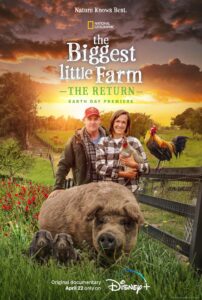 June 2022: The Biggest Little Farm: The Return (video) by John and Molly Chester
June 2022: The Biggest Little Farm: The Return (video) by John and Molly Chester
In April we switched to a movie rather than a book! We discussed The Biggest Little Farm: The Return, available on most streaming platforms for $3.99. This video is a sequel to The Biggest Little Farm, which we watched in April. See the trailer.
 May 2022: Nature’s Best Hope: A New Approach to Conservation that Starts in Your Yard by Douglas W. Tallamy
May 2022: Nature’s Best Hope: A New Approach to Conservation that Starts in Your Yard by Douglas W. Tallamy
Amazon review: “Douglas W. Tallamy’s first book, Bringing Nature Home, awakened thousands of readers to an urgent situation: wildlife populations are in decline because the native plants they depend on are fast disappearing. His solution? Plant more natives. In this new book, Tallamy takes the next step and outlines his vision for a grassroots approach to conservation. Nature’s Best Hope shows how homeowners everywhere can turn their yards into conservation corridors that provide wildlife habitats. Because this approach relies on the initiatives of private individuals, it is immune from the whims of government policy. Even more important, it’s practical, effective, and easy—you will walk away with specific suggestions you can incorporate into your own yard. More about the book.
 April 2022: The Biggest Little Farm (video) by John and Molly Chester
April 2022: The Biggest Little Farm (video) by John and Molly Chester
In April we switched to a movie rather than a book! We discussed The Biggest Little Farm: available on most streaming platforms for $3.99. The Biggest Little Farm chronicles the eight-year quest of John and Molly Chester as they trade city living for 200 acres of barren farmland and a dream to harvest in harmony with nature. Through dogged perseverance and embracing the opportunity provided by nature’s conflicts, the Chesters unlock and uncover a biodiverse design for living that exists far beyond their farm, its seasons, and our wildest imagination. More about the film.
See the trailer.
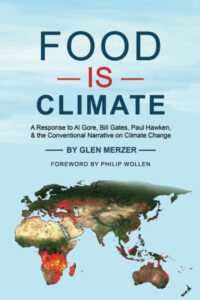 March 2022: Food Is Climate: A Response to Al Gore, Bill Gates, Paul Hawken, and the Conventional Narrative on Climate Change by Glen Merzer
March 2022: Food Is Climate: A Response to Al Gore, Bill Gates, Paul Hawken, and the Conventional Narrative on Climate Change by Glen Merzer
This book gives a different perspective on Climate Change issues, particularly food. The author charges that the loudest voices have not included food in their equation and that there is a leadership void on this issue. More about the book.
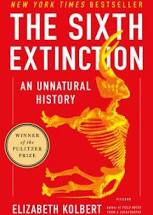 February 2022: The Sixth Extinction: An Unnatural History Paperback by Elizabeth Kolbert
February 2022: The Sixth Extinction: An Unnatural History Paperback by Elizabeth Kolbert
In a story for the New York Times, former Vice President Al Gore said, “Over the past decade, Elizabeth Kolbert has established herself as one of our very best science writers. She has developed a distinctive and eloquent voice of conscience on issues arising from the extraordinary assault on the ecosphere, and those who have enjoyed her previous works like Field Notes From a Catastrophe will not be disappointed by her powerful new book, The Sixth Extinction: An Unnatural History. Kolbert, a staff writer at The New Yorker, reports from the front lines of the violent collision between civilization and our planet’s ecosystem: the Andes, the Amazon rain forest, the Great Barrier Reef — and her backyard. In lucid prose, she examines the role of man-made climate change in causing what biologists call the sixth mass extinction — the current spasm of plant and animal loss that threatens to eliminate 20 to 50 percent of all living species on earth within this century.” More about the book.
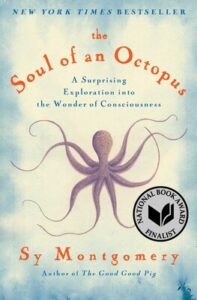 January 2022: Soul of an Octopus: A Surprising Exploration into the Wonder of Consciousness by Sy Montgomery
January 2022: Soul of an Octopus: A Surprising Exploration into the Wonder of Consciousness by Sy Montgomery
In pursuit of the wild, solitary, predatory octopus, popular naturalist Sy Montgomery has practiced true immersion journalism. From New England aquarium tanks to the reefs of French Polynesia and the Gulf of Mexico, she has befriended octopuses with strikingly different personalities—gentle Athena, assertive Octavia, curious Kali, and joyful Karma. Each creature shows her cleverness in myriad ways: escaping enclosures like an orangutan; jetting water to bounce balls; and endlessly tricking companions with multiple “sleights of hand” to get food. More about the book.
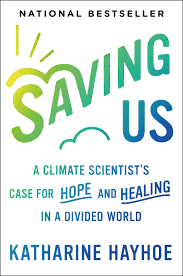 November/December 2021: Saving Us: A Climate Scientist’s Case for Hope and Healing in a Divided World by Katharine Hayhoe
November/December 2021: Saving Us: A Climate Scientist’s Case for Hope and Healing in a Divided World by Katharine Hayhoe
Called “one of the nation’s most effective communicators on climate change” by The New York Times, Katharine Hayhoe knows how to navigate all sides of the conversation on our changing planet. A Canadian climate scientist living in Texas, she negotiates distrust of data, indifference to imminent threats, and resistance to proposed solutions with ease. Over the past fifteen years Hayhoe has found that the most important thing we can do to address climate change is talk about it—and she wants to teach you how. More about the book.
 October 2021: A New Garden Ethic: Cultivating Defiant Compassion for an Uncertain Future by Benjamin Vogt
October 2021: A New Garden Ethic: Cultivating Defiant Compassion for an Uncertain Future by Benjamin Vogt
Our landscapes push aside wildlife and in turn diminish our genetically-programmed love for wildness. How can we get ourselves back into balance through gardens, to speak life’s language and learn from other species? Plenty of books tell home gardeners and professional landscape designers how to garden sustainably, what plants to use, and what resources to explore. Yet few examine why our urban wildlife gardens matter, and not just for ourselves, but for the larger human and animal communities. More about the book.
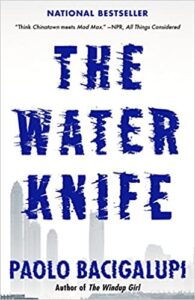 September 2021: The Water Knife by Paolo Backgalupi
September 2021: The Water Knife by Paolo Backgalupi
A timely topic, this 2015 work of science fiction, set in the near future, takes on what happens when drought caused by Climate Change devastates the southwestern United States. More about the book.
 August 2021: The End of Ice: Bearing Witness and Finding Meaning in the Path of Climate Disruption by Dahr Jamail
August 2021: The End of Ice: Bearing Witness and Finding Meaning in the Path of Climate Disruption by Dahr Jamail
After nearly a decade overseas as a war reporter, the acclaimed journalist Dahr Jamail returned to America to renew his passion for mountaineering, only to find that the slopes he had once climbed have been irrevocably changed by climate disruption. In response, Jamail embarks on a journey to the geographical front lines of this crisis—from Alaska to Australia’s Great Barrier Reef, via the Amazon rainforest—in order to discover the consequences to nature and to humans of the loss of ice. More about the book.
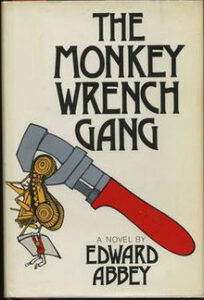 July 2021: The Monkey Wrench Gang by Edward Abbey
July 2021: The Monkey Wrench Gang by Edward Abbey
The book is Edward Abbey’s classic comic gem of destructive mayhem and outrageous civil disobedience—the novel that sparked the environmental activism movement. From Harper Collins: “Ex-Green Beret George Hayduke has returned from war to find his beloved southwestern desert threatened by industrial development. Joining with Bronx exile and feminist saboteur Bonnie Abzug, wilderness guide and outcast Mormon Seldom Seen Smith, and libertarian billboard torcher Doc Sarvis, Hayduke is ready to fight the power—taking on the strip miners, clear-cutters, and the highway, dam, and bridge builders who are threatening the natural habitat. The Monkey Wrench Gang is on the move—and peaceful coexistence be damned!” More about the book.
 May 2021: Running Silver: Restoring Atlantic Rivers and Their Great Fish Migrations by John R. Waldmann
May 2021: Running Silver: Restoring Atlantic Rivers and Their Great Fish Migrations by John R. Waldmann
Running Silver is an informative and fascinating history of the migratory salmon, shad, herring, and other runs that once swarmed the rivers and estuaries of the Atlantic coast. Most important, this book explains what we can do to restore these fisheries to their former abundance. This is a hugely important, fascinating, and unique look at the fish of North America whose history and life-cycles and conservation challenges are poorly understood. Despite these primordial abundances, over the centuries these stocks were so stressed that virtually all are now severely depressed, with many biologically or commercially extinct and some simply forgotten. More about the book.
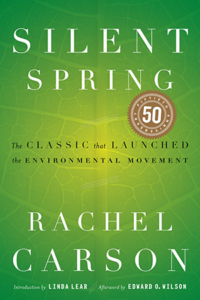 April 2021: Silent Spring by Rachel Carson
April 2021: Silent Spring by Rachel Carson
Published 59 years ago, it can be said that Silent Spring was the inspiration for the environmental movement. The book focuses on the effects of indiscriminate use of pesticides but goes beyond as a study of the need to protect the planet upon which we depend for our very existence. Earth Day month seems like the appropriate time to return to this seminal book. More about the book. Other sources: How ‘Silent Spring’ Ignited the Environmental Movement – NY Times, Fifty Years After ‘Silent Spring,’ Attacks on Science Continue – Yale Environment 360, RachelCarson.org on ‘Silent Spring’
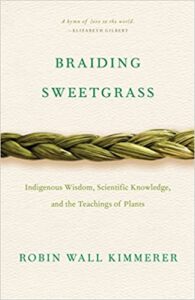 March 2021: Braiding Sweetgrass: Indigenous Wisdom, Scientific Knowledge, and the Teachings of Plants by Robin Wall Kimmere
March 2021: Braiding Sweetgrass: Indigenous Wisdom, Scientific Knowledge, and the Teachings of Plants by Robin Wall Kimmere
Drawing on her life as an indigenous scientist, and as a woman, Kimmerer shows how other living beings―asters and goldenrod, strawberries and squash, salamanders, algae, and sweetgrass―offer us gifts and lessons, even if we’ve forgotten how to hear their voices. In reflections that range from the creation of Turtle Island to the forces that threaten its flourishing today, she circles toward a central argument: that the awakening of ecological consciousness requires the acknowledgment and celebration of our reciprocal relationship with the rest of the living world. For only when we can hear the languages of other beings will we be capable of understanding the generosity of the earth, and learn to give our own gifts in return. More about the book.
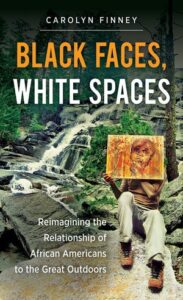 February 2021: Black Faces, White Spaces: Reimagining the Relationship of African Americans to the Great Outdoors by Carolyn Finney
February 2021: Black Faces, White Spaces: Reimagining the Relationship of African Americans to the Great Outdoors by Carolyn Finney
This book addresses why African Americans are so underrepresented when it comes to interest in nature, outdoor recreation, and environmentalism. In this thought-provoking study, Carolyn Finney looks beyond the discourse of the environmental justice movement to examine how the natural environment has been understood, commodified, and represented by both white and black Americans. Bridging the fields of environmental history, cultural studies, critical race studies, and geography, Finney argues that the legacies of slavery, Jim Crow, and racial violence have shaped cultural understandings of the “great outdoors” and determined who should and can have access to natural spaces. More about the book.
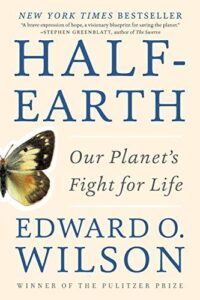 January 2021: Half-Earth: Our Planet’s Fight for Life by E.O. Wilson
January 2021: Half-Earth: Our Planet’s Fight for Life by E.O. Wilson
Half-Earth proposes an achievable plan to save our imperiled biosphere: devote half the surface of the Earth to nature. In order to stave off the mass extinction of species, including our own, we must move swiftly to preserve the biodiversity of our planet, says Edward O. Wilson in his most impassioned book to date. Half-Earth argues that the situation facing us is too large to be solved piecemeal and proposes a solution commensurate with the magnitude of the problem: dedicate fully half the surface of the Earth to nature. More about the book.
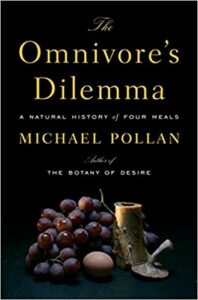 December 2020: The Omnivore’s Dilemma: A Natural History of Four Meals by Michael Pollan
December 2020: The Omnivore’s Dilemma: A Natural History of Four Meals by Michael Pollan
In this groundbreaking book, one of America’s most fascinating, original, and elegant writers turns his own omnivorous mind to the seemingly straightforward question of what we should have for dinner. More about the book. We did something a little different. Our leader, Karen Grumbles, provided a recipe so each prepared the same meal and enjoyed a virtual dinner together while we discussed the book! We fed the mind and body and think Mr. Pollan would approve.
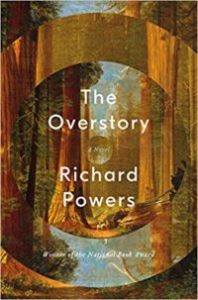 November 2020: The Overstory by Richard Powers
November 2020: The Overstory by Richard Powers
Winner of the Pulitzer Prize in Fiction, this book is a sweeping, impassioned work of activism and resistance that is also a stunning evocation of—and paean to—the natural world. From the roots to the crown and back to the seeds, the novel unfolds in concentric rings of interlocking fables that range from antebellum New York to the late twentieth-century Timber Wars of the Pacific Northwest and beyond. It is the story of a handful of people who learn how to see that world and who are drawn up into its unfolding catastrophe. More about the book.
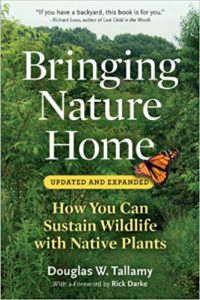 October 2020: Bringing Nature Home: How You Can Sustain Wildlife with Native Plants by Douglas W. Tallamy
October 2020: Bringing Nature Home: How You Can Sustain Wildlife with Native Plants by Douglas W. Tallamy
Tallamy reveals the unbreakable link between native plant species and native wildlife—native insects cannot, or will not, eat alien plants. When native plants disappear, the insects disappear, impoverishing the food source for birds and other animals. More about the book.
 September 2020: The World is Blue: How our Fate and the Oceans are One by Sylvia Earle
September 2020: The World is Blue: How our Fate and the Oceans are One by Sylvia Earle
From National Geographic: “A Silent Spring for our era, this eloquent, urgent, fascinating book reveals how just 50 years of swift and dangerous oceanic change threatens the very existence of life on Earth. Legendary marine scientist Sylvia Earle portrays a planet teetering on the brink of irreversible environmental crisis… Earle argues passionately and persuasively… to find responsible, renewable strategies that safeguard the natural systems that sustain us. The first step is to understand and act upon the wise message of this accessible, insightful, and compelling book.” More about the book.
Other Earle links:
Short Trailer for Mission Blue Netflix movie featuring Sylvia Earle
TED Talk on Mission Blue “Hope Spots”
National Geographic Sylvia Earle page
 August 2020: Chesapeake Requiem: A Year with the Watermen of Vanishing Tangier Island by Earl Swift
August 2020: Chesapeake Requiem: A Year with the Watermen of Vanishing Tangier Island by Earl Swift
“A brilliant, soulful, and timely portrait of a two-hundred-year-old crabbing community in the middle of the Chesapeake Bay as it faces extinction.” “As development and habitat destruction accelerate, there are increasing pressures on wildlife populations. In Bringing Nature Home, Douglas W. Tallamy reveals the unbreakable link between native plant species and native wildlife—native insects cannot, or will not, eat alien plants. When native plants disappear, the insects disappear, impoverishing the food source for birds and other animals.” More about the book.
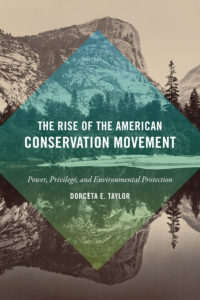 July 2020: The Rise of the American Conservation Movement by Dorceta Taylor
July 2020: The Rise of the American Conservation Movement by Dorceta Taylor
“…sweeping social history … [examining] the emergence and rise of the multifaceted U.S. conservation movement from the mid-nineteenth to the early twentieth century… [showing] how race, class, and gender influenced every aspect of the movement. More about the book.
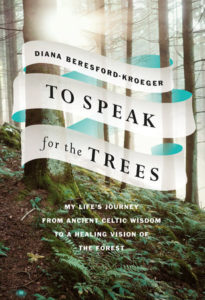 June 2020: To Speak for the Trees: My Life’s Journey from Ancient Celtic Wisdom to a Healing Vision of the Forest by Diana Beresford-Kroeger
June 2020: To Speak for the Trees: My Life’s Journey from Ancient Celtic Wisdom to a Healing Vision of the Forest by Diana Beresford-Kroeger
“…in a captivating account of how her [the author’s] life led her to these illuminating and crucial ideas, she shows us how forests can not only heal us but save the planet.” More about the book.
 May 2020: Inconspicuous Consumption: The environmental impact you don’t know you have by Tatiana Schlossberg
May 2020: Inconspicuous Consumption: The environmental impact you don’t know you have by Tatiana Schlossberg
“…a compelling and unexpectedly entertaining look at how climate change is entangled in everything we use, buy, eat, wear and how we get around.” More about the book.
 April 2020: The Future We Choose: Surviving the Climate Crisis by Christiana Figueres and Tom Rivett-Carnac
April 2020: The Future We Choose: Surviving the Climate Crisis by Christiana Figueres and Tom Rivett-Carnac
A recent book, it is both cautionary and hopeful. Given that we are already dealing with so much uncertainty in our lives, this is a good, more optimistic read with suggestions for actions that we can take. More about the book.